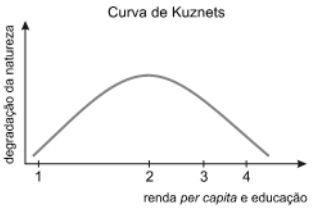No plano cartesiano abaixo estão representados o gráfico da função real f definida por f(x) = -x2 – x + 2 e o polígono ABCDE.
_(2).png)
Considere que:
- o ponto C é vértice da função f.
- os pontos B e D possuem ordenadas iguais.
- as abscissas dos pontos A e E são raízes da função f.
Pode-se afirmar que a área do polígono ABCDE, em unidades de área, é
Questões relacionadas
- Matemática | 1.06 Razão, Proporção e Regra de Três
(FUVEST 2018 1ª FASE) Dois atletas correm com velocidades constantes em uma pista retilínea, partindo simultaneamente de extremos opostos, A e B. Um dos corredores parte de A, chega a B e volta para A. O outro corredor parte de B, chega a A e volta para B. Os corredores cruzam se duas vezes, a primeira vez a 800 metros de A e a segunda vez a 500 metros de B. O comprimento da pista, em metros, é
- História - Fundamental | 05.3. Registros da história: a nossa cultura
Entre agosto de 1954 e novembro de 1955, o Brasil foi governado por Café Filho, vice-presidente da República do governo de Getúlio Vargas. Em outubro de 1955, aconteceu a eleição para a Presidência da República, quando saiu vitorioso o mineiro Juscelino Kubitschek, ou JK, como era conhecido.
Preencha corretamente os espaços em branco com as palavras do quadro.
CAPITAL – INAUGURADA – BRASÍLIA – ESTADOS UNIDOS – MODERNIDADE – EUROPA
PROGRESSO – INDÚSTRIAS – AUTOMOBILÍSTICA – ALIMENTOS
a) Seu governo desejava que as _________________________ passassem a produzir máquinas e equipamentos, que, até então, eram importados, vinham de outros países. Isso significava mais capacidade e estímulo à fabricação de roupas, ___________________________ e outros produtos. Uma das indústrias que mais cresceu durante o governo JK foi a _______________________________ .
b) Juscelino também queria construir, na região central do Brasil, a nova _________________________ do país: _________________________ . A construção de Brasília ocorreu ao longo de todo o governo de JK e foi ____________________________ em 21 de abril de 1960.
c) Durante esse período, os brasileiros tiveram a sensação de que o país havia entrado numa fase de ________________________ e ___________________________. Mas isso teve um custo muito elevado, pois o Brasil ficou devendo dinheiro aos e aos __________________________ países da __________________________ , que emprestaram grandes quantias para a realização desses projetos.
- Física | 3.3 Calorimetria e Mudança de Fase
(UNICAMP) A depilação a laser é um procedimento de eliminação dos pelos que tem se tornado bastante popular na indústria de beleza e no mundo dos esportes. O número de sessões do procedimento depende, entre outros fatores, da coloração da pele, da área a ser tratada e da quantidade de pelos nessa área.
Na depilação, o laser age no interior da pele, produzindo uma lesão térmica que queima a raiz do pelo. Considere uma raiz de pelo de massa m = 2,0 x 10-10 kg inicialmente a uma temperatura Ti = 36°C que é aquecida pelo laser a
uma temperatura final Tf = 46°C.
Se o calor específico da raiz é igual a c = 3.000 J/kg°C o calor absorvido pela raiz do pelo durante o aquecimento é igual a
Dados: Se necessário, use aceleração da gravidade g = 10 m/s² aproxime π = 3 e 1 atm = 105 Pa
- Química | 1.5 Funções Inorgânicas
(UNIT) A amônia (NH3), também chamada de amoníaco, é um composto gasoso que, ao ser dissolvido em água, origina íons (OH-). A solução aquosa diluída de amônia foi utilizada no passado para fazer o material conhecido como sangue do diabo, um líquido róseo que, ao ser borrifado sobre um tecido branco, perde rapidamente sua cor.
Sobre a amônia, é correto classificá-la como pertencente à função química indicada na alternativa
- Biologia | 12.5 Sucessão Ecológica
(UNESP) Segundo a teoria da curva ambiental de Kuznets, o índice de poluição e de impactos ambientais nas sociedades industriais comporta-se como na figura abaixo: a degradação da natureza aumenta durante os estágios iniciais do desenvolvimento de uma nação, mas se estabiliza e passa a decrescer quando o nível de renda e de educação da população aumenta. Considere a curva ambiental de Kuznets representada na figura e quatro situações ambientais distintas:
I. Implantação de programas de reflorestamento.
II. Mata nativa preservada.
III. Estabelecimento de uma comunidade clímax.
IV. Área desmatada para extração de madeira.

Na curva, as posições marcadas de 1 a 4 correspondem, respectivamente, às situações